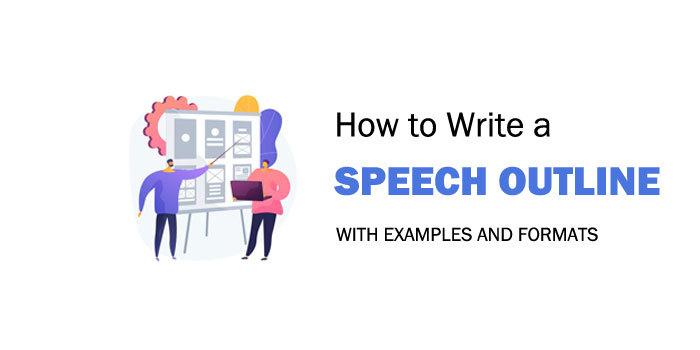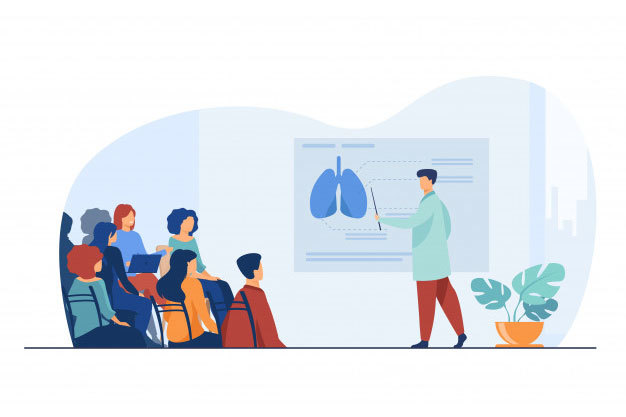

You have been chosen to give a speech on a particular topic and you reckon that you’re a good speech writer.
However, without a good speech outline, your speech lacks the proper skeleton to put meat on.
A speech outline is to a speech what a blueprint is to an unconstructed building.
So, how do you develop a good speech outline? First, break it down into small steps as this will make it easier for you to prioritize your ideas and organize them in the right order before you add more details to them.
Table of ContentsBelow are steps that will enable you to write an effective speech outline for your presentation.
You should start by asking yourself:
Before you begin writing your outline, you should take a step back and think about your speech as a whole.

First, think about the 3 keystones for your presentation or speech, i.e. the audience, your subject matter and of course, you, as the speaker.
Then, write a few notes down about each keystone and how they relate with each other. For instance,
A good outline will help you engage with your audience in a way that not only captures their attention but enables them to understand the subject matter.
This refers to the goal of your presentation. Here, you should ask yourself, what do you want your audience to do after your presentation is over?

While the objective for most speakers is for their audience to know something, that may not be enough. The best presentations and speeches are those that move people to act.
If you would prefer to make an impact in such a way, then you should ensure that you are as specific as you can be when deciding on your objective in your speech outline.
Your message is what holds your presentation or speech together. This is not to mean that you shouldn’t have different parts in your speech, but it does mean that your speech should have one message that you are trying to put across.

Trying to include several different messages in your speech may confuse your audience, which makes it harder for them to understand the main point you are trying to convey.
To do this, summarize the message of your presentation in one statement. This will not only allow you to understand the message in its entirety but also allow you to explain the message to your audience in a way that is easy to understand.
You can now use the statement you wrote above to help you develop your speech outline. Using the statement to determine whether a certain point supports your main message will ensure that your speech flows and doesn’t include any information not relevant to your subject topic.
When it comes to a presentation or speech, the audience should always come first. That is why as a speaker, you should always keep your audience in mind when presenting.
If you have already decided on the message you will be conveying to your audience, you should now ask yourself; how is your message relevant to the audience?

If you can’t come up with a reason why your presentation is relevant, then it’s back to the drawing board for you. This could mean that you will be presenting to the wrong audience or you will be giving the wrong presentation.
You can refer back to step (c) then review steps (a) and (b) for clarity.
This is a very important part of your presentation as without it, your speech will have no impact on the audience. Therefore, you should ensure that you include the speech structure in your speech outline.
A structure has 3 basic parts; the introduction, the body and the conclusion. It should be noted though that when working on your speech outline, a common suggestion is to begin with the body before developing both your introduction and conclusion.

Under your speech structure, the introduction is the opening of your speech/presentation. To make a good first impression on your audience, ensure that your introduction is strong.
This doesn’t have to be the usual, “Good morning, my name is YXZ…” Instead, capture your audience’s attention by either telling a story or an interesting fact, recite a quote, ask your audience to recall or imagine something or even ask a rhetorical question!
The body of your presentation represents the bulk of your speech. You should therefore ensure that your main points can be explained in detail and that they have been organized in a logical order that makes your message easy to comprehend.
Similar to your introduction, you should finish on a strong note when it comes to your conclusion. You can do this by linking your conclusion to your introduction, after which you can then echo and summarize your message’s main points.
Below are a few examples of different speech outlines that you can use as a basis to write your own outline. Choosing the right one that works for you may depend on the type of speech you will be giving.
Persuasive presentations and speeches usually have a specific purpose in mind; either to urge the audience to take action on something or persuade them to adopt a certain view or opinion of something.

This type of outline allows you, the speaker, to focus on the subject matter point while arguing your case in the most effective and compelling way to your audience.
A persuasive speech outline is made up of these parts:
The first three parts are common in most if not all presentations; please refer to step (e) to familiarize yourself with them once more.
A source citation is simply citing the sources for the research and facts that you presented in your speech. Remember you are trying to persuade your audience, so authoritative sources add weight to your argument.
There are different types of informative outlines. These include:
These outlines are made up of 3 basic parts; the introduction, body and conclusion. For purposes of this article, we will be discussing the informative speech outline.
The central objective of an informative speech is to offer unique, useful and interesting information to your audience. Before choosing your informative speech topic, you should consider your overall objective.

Additionally, there are various types of informative speeches, including: